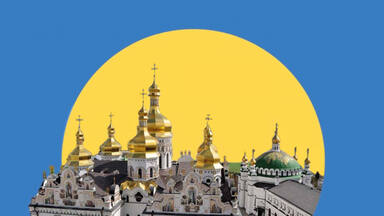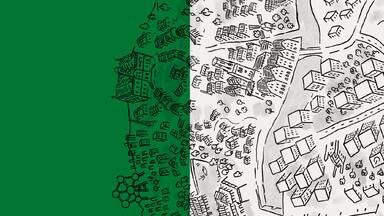Monitoring the implementation of the World Heritage Management and Action Plan in the Historic Centre of Florence (Italy)
In the Historic Centre of Florence, the Sustainable Development Goals are used as monitoring tools to assess the contribution of heritage-related strategies and initiatives towards sustainable development.
About the city of Florence
The Historic Centre of Florence was inscribed on the World Heritage List in 1982 under criteria (i), (ii), (iii), (iv) and (vi). Built on the site of an Etruscan settlement, the symbol of the Renaissance rose to economic and cultural pre-eminence under the Medici in the 15th and 16th centuries. Its 600 years of extraordinary artistic activity can be seen above all in the 13th-century cathedral (Santa Maria del Fiore), the Church of Santa Croce, the Uffizi and the Pitti Palace, the work of great masters such as Giotto, Brunelleschi, Botticelli and Michelangelo.
Historic Centre of Florence: Message from Mayor Mr Dario Nardella on the occasion of 10th Anniversary on the UNESCO Recommendation on the Historic Urban Landscape © Comune di Firenze, 2021
Florence is one of the most visited cities in Italy. In 2019, it registered over 15 million tourist overnight stays, over 20 times its population of 708,000, according to Statista. According to the site manager, the main issues that are currently affecting the site include the impact of tourism in the long term, leading to gentrification processes and a reduction in the number of residents, as well as a lack of funds for heritage conservation, mobility and pollution issues, climate change and flood risks.
The report of the 2017 Joint UNESCO World Heritage Centre / ICOMOS Advisory Mission focused on the key issues of tourism management and transportation systems, recommending a cautious approach towards transport infrastructure upgrades due to a risk of increasing the number of short-stay visitors. Additionally, the report advised the completion of the tramway network, discouraging underground transportation links and additional car parking in the centre. Other recommendations referred to the updating of the Management Plan, the maintenance of multiple uses besides tourism in the historic centre, the inclusion of Heritage Impact Assessment in management processes and the development of a register of heritage buildings at risk due to under-use or decay.
Monitoring the implementation of the World Heritage Management and Action Plan in the Historic Centre of Florence
The World Heritage management framework of the Historic Centre of Florence is defined by a Management Plan which sets out the conservation and development objectives, and an Action Plan that outlines how to achieve these goals. The progress of implementation is measured using the Sustainable Development Goals as monitoring tools.
Historic Centre of Florence: presentation of the management systems © Comune di Firenze, 2021
Management frameworks
The World Heritage site of the Historic Centre of Florence comprises a core area of 532 ha. The property boundaries follow the boulevards and old city walls, built at the beginning of the 14th century and almost entirely destroyed during the 19th century. The buffer zone extends over 10,453ha, including the hills around the historic centre. The buffer zone was approved by the World Heritage Committee in 2014 and integrated in urban planning tools in May 2020.
The World Heritage site is managed by the World Heritage Office of the Municipality of Florence since 2005. The management of the site is defined by two key documents: a Management Plan and an Action Plan.
- The World Heritage Management Plan aims to ensure and conserve the site’s Outstanding Universal Value (OUV), while guiding development in line with safeguarding goals and favouring the optimisation of resources and investment. It was first created in 2006. It is monitored and updated regularly, the most recent update dating from 2016. A new update is planned to be finalised in 2021.
- The Action Plan outlines the concrete and effective application of the Management Plan, identifying the operational strategies to be implemented and the projects to be realised to sustain both the conservation of the integrity and authenticity of the site and the development of the Historic Centre.
Over 30 projects have been developed in line with the management and Action Plans. They include:
- Implementation of an integrated mobility system, that includes tramway lines, electric taxis, pedestrian areas and bike lanes, in line with the recommendations of the 2017 Joint Monitoring Mission.
- Preparation of a Flood Risk Management Plan to build a homogeneous and effective framework to manage flood risk.
- Landscape interventions to reactivate small and underutilised squares and public spaces, with a view to improve quality of life in the historic centre.
- Creation of a joint research laboratory between the University of Florence and the Municipality of Florence, in order to strengthen the site governance.
- Development of a network of 15km of green paths in the landscape of the Oltrarno.
Monitoring progress
In order to monitor the progress and results of the World Heritage Management Plan, the Municipality of Florence carried out a monitoring exercise in 2018. The study was innovative in employing the United Nations’ Sustainable Development Goals (SDGs) as monitoring tools to track the contribution by each initiative, and cultural heritage as a whole, towards sustainable development.
In total, 33 projects were assessed using the SDGs and targets. The projects, designed to address the key issues of site such as mass tourism, conservation, flooding, mobility and depopulation, were spread across five core areas: tourism management; conservation and documentation of built heritage; transportation systems; natural disasters and climate change; and the liveability, commerce and housing in the historic centre. More than 30 public and private stakeholders were involved.
The monitoring process was positively reviewed by the 2019 ICOMOS Technical Review, which stated that “the comprehensive monitoring approach set out in the document, including “efficiency indicators”, is commendable.”
Next steps
During 2020, the World Heritage Management Office commenced the updating process for the Management Plan. The outbreak of the COVID-19 pandemic in early 2020 forced the site managers to reconsider a new set of priorities, including guaranteeing the health of residents and users, safeguarding social and economic activities, and compensating for the economic downturn caused by the drastic reduction in tourism arrivals. Additionally, planning a safe and sustainable recovery of the urban lifestyle and dynamics became a primary concern.
Besides the change in paradigm caused by the COVID-19 pandemic, the update of the Management Plan aims to build on the previous monitoring exercise to use the SDGs targets and indicators as a general monitoring framework, based on the work by the Italian National Institute of Statistics (Istat). The methodology aims to be more coherent with national and international frameworks, following the implementation of the Action Plan and contributing to sustainable development on site.
Example of the potential application of SDGs, targets and indicators to measure impact of heritage-related initiatives: Florence greenways.
The project of the Florence greenways aims to build a network of green paths that connect different gardens and parks within the World Heritage site. Overall, it aims to target SDGs 8, 11, 12, 17. The contribution of the project towards this goal is measured following different targets and indicators, such as:
- Sustainable Development Goal 11: Make cities and human settlements inclusive, safe, resilient and sustainable.
- Target 11.4: Strengthen efforts to protect and safeguard the world’s cultural and natural heritage.
- Indicator 11.4.1: Total expenditure (public and private) per capita spent on the preservation, protection and conservation of all cultural and natural heritage, by type of heritage (cultural, natural, mixed and World Heritage Centre designation), level of government (national, regional and local/municipal), type of expenditure (operating expenditure/investment) and type of private funding (donations in kind, private non-profit sector and sponsorship).
- Target 11.4: Strengthen efforts to protect and safeguard the world’s cultural and natural heritage.
Contribution towards the implementation of the 2011 Recommendation on the Historic Urban Landscape
The project aims to contribute to the implementation of the Historic Urban Landscape approach by:
- Incorporating urban heritage in plans for sustainable urban development;
- Developing integrated legal and spatial planning tools that provide statutory protection to heritage assets in a comprehensive way;
- Promoting a people-centred approach to urban heritage; management that involves local stakeholders and communities
- Including the geographical context and landscape of the World Heritage site in statutory protection tools;
- Applying the HUL approach at different scales: landscape, city, street, individual initiatives;
- Promoting the integration of policy frameworks for sustainable development and heritage conservation.
Historic Urban Landscape Tools
Civic engagement tools Knowledge and Planning tools Regulatory systems
Contribution towards Sustainable Development
If fully implemented in accordance with the described plans, the initiative could contribute towards Sustainable Development and the Sustainable Development Goals.

Goal 8. Promote sustained, inclusive and sustainable economic growth, full and productive employment and decent work for all.
- Target 8.9: the initiative aims to implement policies to promote sustainable tourism that creates jobs and promotes local culture and products.

Goal 11. Make cities and human settlements inclusive, safe, resilient and sustainable
- Target 11.3: the initiative aims to enhance inclusive and sustainable urban development and capacity for participatory, integrated and sustainable urban planning and management.
- Target 11.4: the initiative aims to protect and safeguard the world’s cultural heritage.

Goal 16. Promote peaceful and inclusive societies for sustainable development, provide access to justice for all and build effective, accountable and inclusive institutions at all levels.
- Target 16.b: the initiative aims to promote laws and policies for sustainable development.

Goal 17. Strengthen the means of implementation and revitalize the global partnership for sustainable development
- Target 17.17: the initiative aims to encourage and promote effective public, public-private and civil society partnerships, building on the experience and resourcing strategies of partnerships.
To learn more
- Watch the speech by Mr Dario Nardella, Mayor of Florence, during the Celebrations of the 10th Anniversary on the 2011 UNESCO Recommendation on the Historic Urban Landscape (in English, French and Spanish).
- Watch the presentation by site manager Mr Carlo Francini during the International Conference “World Heritage Sites: Sustainable Development Practices for Urban Heritage”
- Consult the 2016 Management Plan of the World Heritage site “Historic Centre of Florence”
- Consult the 2017 report on the joint UNESCO / ICOMOS advisory mission to the World Heritage site "Historic Centre of Florence”.
- Consult the 2018 report on the Monitoring of the Management Plan of the World Heritage site “Historic Centre of Florence”.
Contact
Historic Centre of Florence World Heritage Management Office, Municipality of Florence
- Website: https://www.firenzepatrimoniomondiale.it/en/
- Address: via Giuseppe Garibaldi 7, 50123 - FIRENZE
- Telephone: +39 055 2625 441 / 055 2625 439
- Email: firenzepatrimoniomondiale@comune.fi.it
- Facebook: @FirenzePatrimonioMondiale
- Twitter: @FirenzePatrimonioMondiale
Credits
© UNESCO, 2021. Project team: Jyoti Hosagrahar, Alba Zamarbide, Carlota Marijuán Rodríguez, Federico Rudari.
Cover image: Author: Niccolo Bandini © Municipality of Florence
Note: The cases shared in this platform address heritage protection practices in World Heritage sites and beyond. Items being showcased in this website do not entail any type of recognition or inclusion in the World Heritage list or any of its thematic programmes. The practices shared are not assessed in any way by the World Heritage Centre or presented here as model practices nor do they represent complete solutions to heritage management problems. The views expressed by experts and site managers are their own and do not necessarily reflect the views of the World Heritage Centre. The practices and views shared here are included as a way to provide insights and expand the dialogue on heritage conservation with a view to further urban heritage management practice in general.



 8 Decent Work and Economic Growth
8 Decent Work and Economic Growth
 11 Sustainable Cities and Communities
11 Sustainable Cities and Communities
 16 Peace, Justice and strong Institutions
16 Peace, Justice and strong Institutions
 17 Partnerships for the Goals
17 Partnerships for the Goals